The smell of the firewood may be a significant factor in your selection process, with scents ranging from a classic smokey smell to beautiful aromatic fruit variants and even the classic festive-smelling pinewood. While it’s important to remember that everyone has different opinions on firewood aromas, certain woods definitely smell better than others.
This list will provide you with details about various popular and widely available woods and some that you will want to skip to avoid an upset around the campfire.
Best Smelling Firewood for a Bonfire
Firewood With a Classic Smoke Smell
A classic smokey scent is what you might expect to find when being invited to a campfire for the first time; that will provide a traditional, heartwarming aroma that will be sure to make you feel great on a cold winter’s night.
Hickory
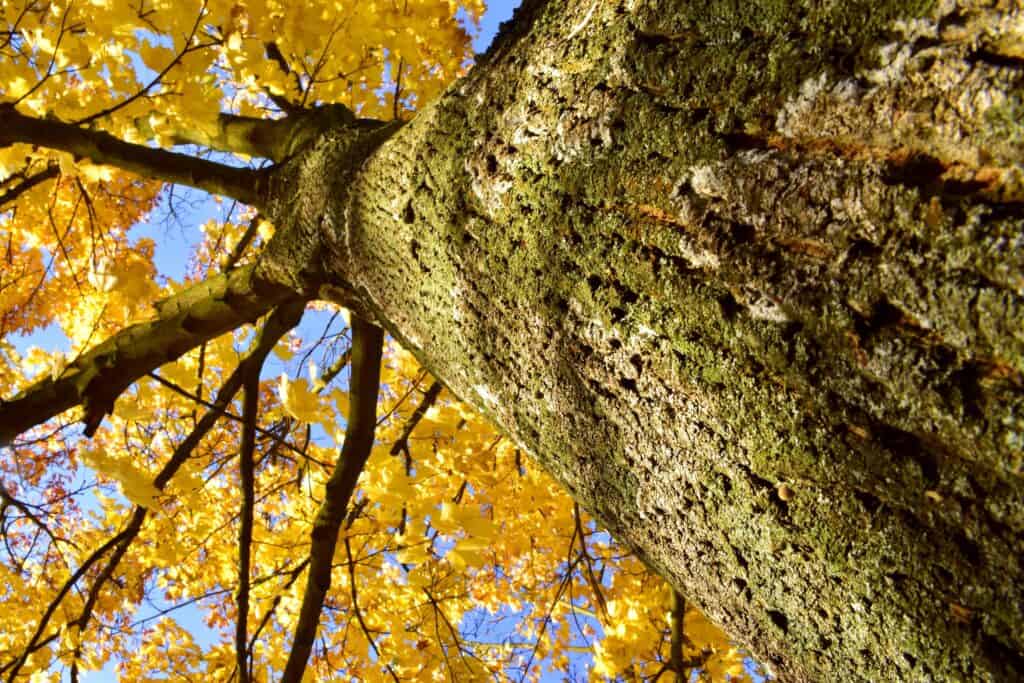
The Hickory tree has the traditional campfire-esque smokey smell to it that almost everyone loves. As a hardwood, hickory burns hotter and longer than other softwoods, which means you’ll have more time to spend with your guests and not tend to the fire.
Hickory is also a great wood for smoking meats, providing a prominent aroma while cooking, a notable flavor profile, and a long, hot burn time.
Oak
Oak tends to produce a mild smoky aroma, so if you or your guests tend to find the smell of hickory a bit too overwhelming, then oak is a great alternative.
Alder
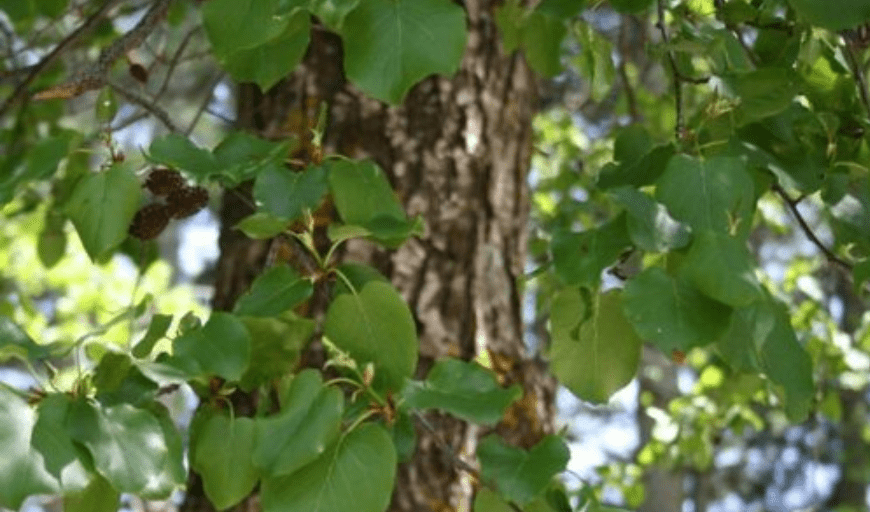
Following the trend, alder firewood generates a lighter aroma than hickory and oak. Still, as a medium-density hardwood, it will burn much faster, with around 17.5 million BTUs, compared with approximately 24 million BTUs of oak and 27 million BTUs of hickory.
What are BTUs?
BTUs, or British Thermal Units, is a measure of the amount of heat generated by a given material. While the exact formula and methodology for calculating BTUs is beyond the scope of this article, just know that a higher BTU rating means more heat generated.
You’ll find that almost all hardwoods have a higher BTU rating than any softwood. This is due to the nature of the wood having more densely-packed fibers, allowing more fuel for the fire in the same amount of space.
Firewood with a Sweet Fruity Smell
If you’re looking for sweet, fruity smells, it’s hard to beat classic options such as cherry, apple, and pear. These popular firewoods, among other fruit woods, produce highly aromatic, widely appreciated smells.
Cherry
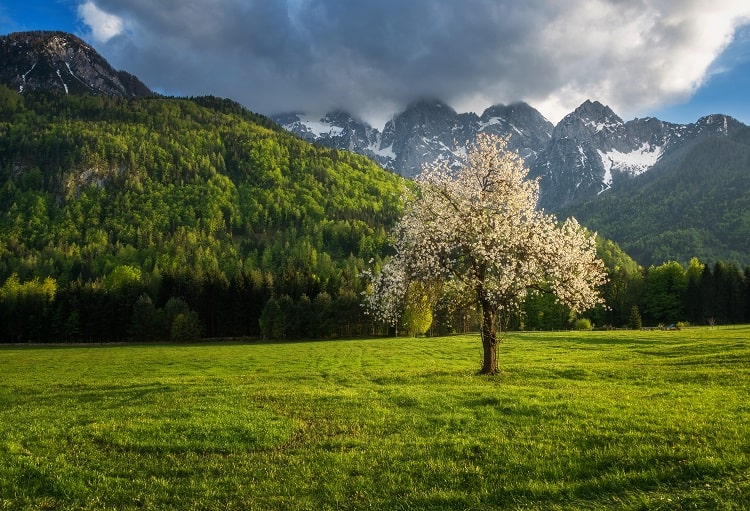
Cherry firewood produces a unique, rich, and long-lasting aroma, great for a campfire during social gatherings. Cherry is a popular wood that is widely available, used not only for burning but also woodworking.
Splitting the firewood is a critical step to get the most out of it, and good, well-seasoned cherry wood should produce an aroma even during the splitting process.
Apple
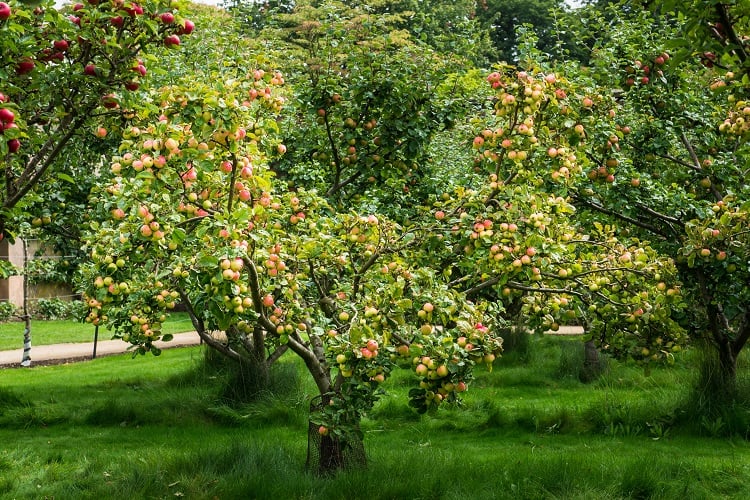
Another beautifully smelling, widely available firewood is apple. A sweet-smelling hardwood is an excellent choice for campfires, home fireplaces, and even smoking meats. Even just a small amount of apple firewood will produce enough scent to be noticeable.
Pear Tree
With mildly sweet flavors similar to apple, one of the primary differences between apple and pear is the scent between the two, and you will need a little more firewood to produce a noticeable smell.
While still widely available, pear might be a little more difficult to find than apple, and applewood might work better for producing a discernible difference when smoking meats.
Firewood with a Crisp Fresh Smell
Cedar and pine are both widely known firewoods that have rich smells that one might find in fragrant products such as air fresheners and cleaning supplies.
Pine

Pine is an incredibly popular firewood with a festive, crisp, and sweet aroma, commonly used as Christmas trees. As a softwood, it burns quickly and produces lots of smoke, so keep that in mind if using it in a campfire with many gathered around.
Cedar
Cedar (Juniper) is another popular softwood that is highly aromatic and has a fresh, woody yet slightly citric aroma. With similarities to the juniper berry, some may find juniper firewood smells a little like a classic gin.
Popular Nutty Smelling Firewood
Pecan (Hickory)
Pecan firewood shares many of the same qualities as hickory, as it is of the same genus. However, as it is grown in a different region, it does have some differences.
The smell of pecan tends to be stronger and nuttier than hickory, so long as it is well-dried and seasoned. If the wood hasn’t been appropriately seasoned, it may produce much more odorless smoke than other types of wood on this list.
Walnut
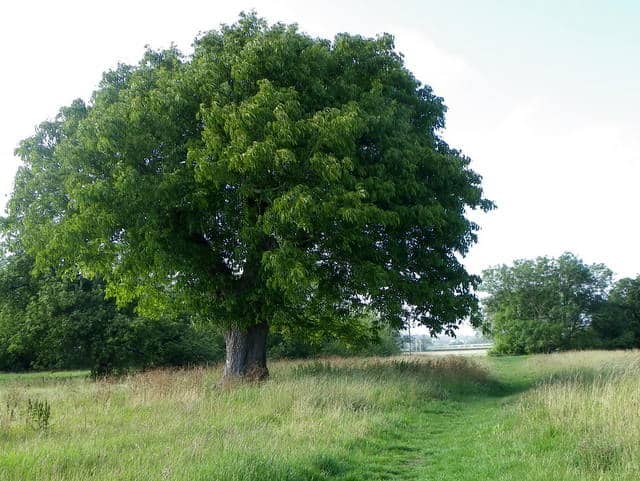
Walnut wood is commonly used in fine furniture and is typically a costly wood to buy compared to some other excellent choices.
Walnut gives off a nutty, slightly earthy aroma with a touch of sweetness, which most will find to be quite pleasing, but it should be noted that not all walnut firewood will offer great scents when burned, and one should take caution with this type of wood.
Some say that black walnut produces a smell that is similar to cat pee and should probably be avoided!
Don’t Forget to Mix and Match
With the vast range of smells and flavors available to you when selecting firewood, it should be easy enough to find one you and your guests enjoy. However, it’s possible to take things one step further by blending different species of wood to create unique combinations.
A solid strategy is combining a base wood with a mild yet classic smokey smell such as oak or alder, with a strong-smelling wood such as cherry, but the options are endless.
PRO-TIP
Build a strong base of glowing coals early in the evening with oak or hickory. Then when your guests arrive and you are spending more time around the fire, add in your more ‘exotic’ smelling woods. The base will keep everybody warm, while the rich-smelling woods will provide a pleasant aroma.
Bad Smelling Firewood to Avoid
Seasoning your firewood should always be a priority before burning, and improperly seasoned wood typically smells unpleasant. That said, there are certain woods you will probably want to stay away from anyway.
Red Oak

Red oak tends to produce a smell that most people would find incredibly unpleasant. It has been described as smelling like manure, vomit, and urine. It is unclear why it smells like this, and although adequately seasoning the wood can reduce the odor, it should probably still be avoided if possible.
Buckeye
Buckeye is a common tree around the midwest, which doesn’t smell too good even when it’s seasoning on a wood stack but smells even worse when burned on a campfire. Again, seasoning can reduce the smell but not to the point of smelling anywhere near pleasant.
Eucalyptus
Eucalyptus produces a powerful smell, which some people may compare to home-remedy medications such as vapor rubs. While the scent is commonly found to be unpleasant, it may be used in cooking certain dishes.



